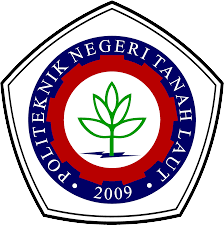Author Guidelines
Title
The title should be a maximum of 12 words, using Times New Roman font, size 12, bold, centered, and each word capitalized.
Author Identity
The full name of the author should be written without abbreviation or title. Below the name, include the full name of the author’s institution and the author's email address.
Abstract
The abstract is a brief summary of the entire article or scientific paper, including four components: (1) Problem and objectives; (2) Methods used; (3) Results and Discussion; and (4) Conclusion and Suggestions. The abstract should be written in both Indonesian and English, in a single paragraph without footnotes or references, single-spaced, and with a maximum of 200 words in Indonesian, using font size 11, accompanied by keywords. The English abstract should follow the same format.
Introduction
The introduction outlines the background of the problem being solved, related issues, and includes a State of The Art (a brief review of previous studies, 1-2 paragraphs) to justify the novelty, significance, scientific contribution, or originality of the article, ideally referencing articles from the last 10 years. The purpose of the article should be stated without using the article's title. Subtitles are not needed in the introduction. The introduction text should be a maximum of 2 pages, single-spaced, in Times New Roman size 12.
Research Methods
This section includes the type and approach of the research, location and time, research subjects, data/information collection techniques, data analysis techniques, and cycles. The length should be 1-1.5 pages, single-spaced, in Times New Roman size 12.
Results and Discussion
This section presents the data/information obtained and analyzes it according to the purpose of the article. Subtitles can be used as needed. Subtitles should be bold. The discussion must be supported by references and should stay focused. If the article involves experiments, the results should be presented in the form of graphs or tables. Captions for figures, graphs, or charts should be in Times New Roman, bold, size 11, centered below the figures, while table captions should be centered above the tables. Each figure or table should have a title or description, e.g., "Table 1. Frequency Distribution...". All text within figures/tables must be readable and not blurred. Each figure/table should be referenced in the text before being placed. In tables, only horizontal lines in the heading and bottom sections are needed. Figures or tables should be numbered sequentially without chapter numbers (e.g., Table 1, not Table 4.1).
Conclusion and Suggestions
The conclusion should clearly indicate the obtained results, their strengths, and weaknesses. It should synthesize the problem, objectives, and results, adequately answering and aligning with the research problem or objectives. Implications or suggestions can be added (optional). Conclusions should be written in paragraphs, not as lists or numbered items.
References
References should be listed alphabetically. All cited works must be listed in the references, and all listed references must be cited in the article. For scientific fields, at least 70% of the references should be from primary literature or scientific journals; for social humanities fields, at least 50% should be from primary literature or scientific journals. Books containing theoretical concepts may be used as references but should not exceed 30% for scientific fields or 50% for social humanities. The references list should include a minimum of 15 references (for health sciences, at least 20 references).





